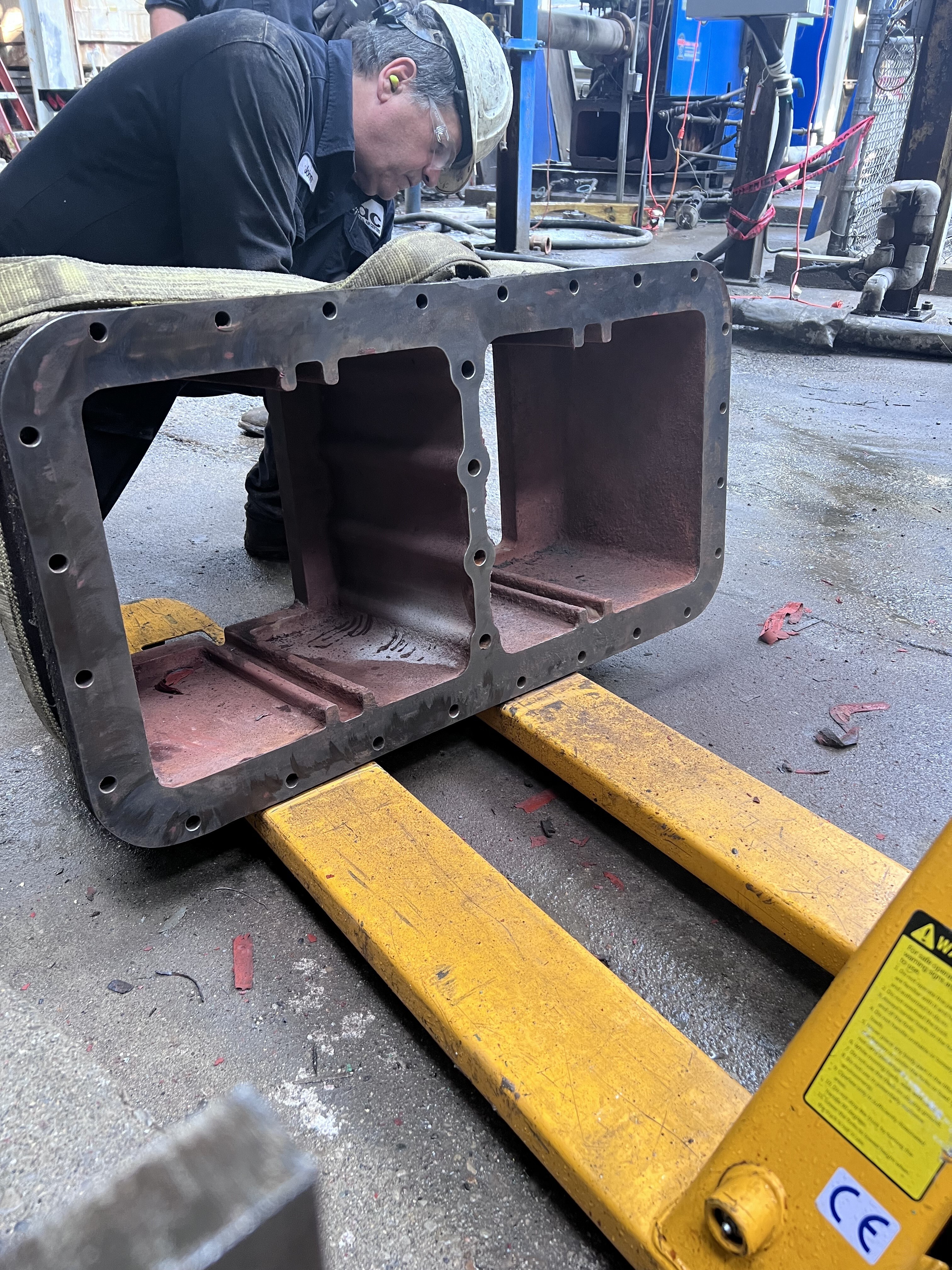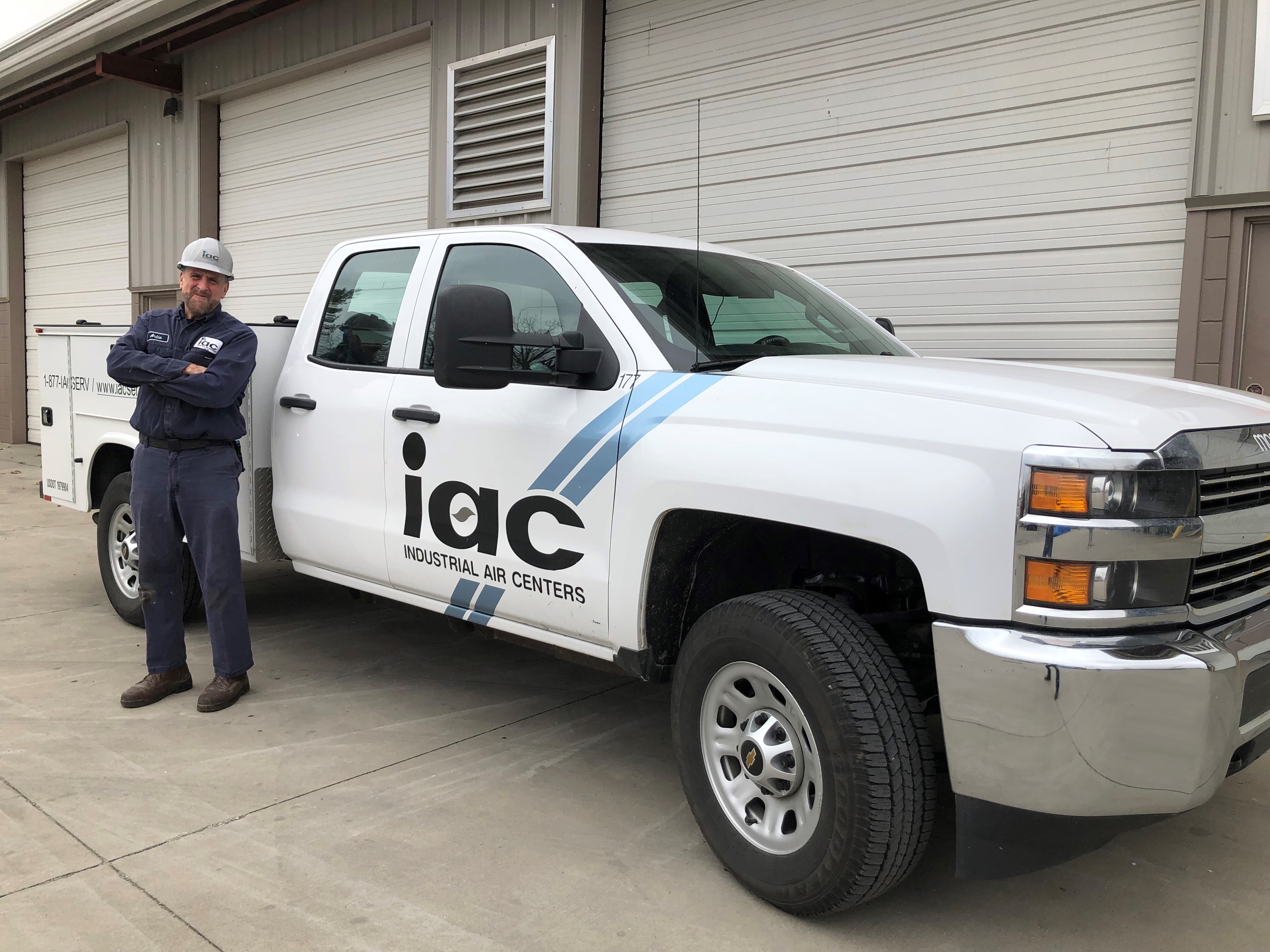Air Compressor Repair: The Complete Guide to Diagnosing and Fixing Problems
Posted by Industrial Air Centers on 09/29/2025
When an air compressor goes down, so does productivity, and the costs add up quickly. That’s true on any shop floor, but especially in industrial facilities where compressed air is a utility that keeps entire plant moving.
This guide is built to help you act fast and smart. Start with a safe, structured troubleshooting process, knock out the fixes you can handle in-house, and know exactly when to bring in factory-trained technicians to protect uptime, warranty, and budget.
Overview
When you suspect a repair is in order, use this step-by-step outline within the first hour to curb further issues and downtime:
- Make it safe: LOTO, relieve pressure, verify energy isolation.
- Check the obvious: Oil level/condition, cooler cleanliness, clogged filters, drain operation, belt/coupling condition.
- Pull key readings: Discharge pressure vs. setpoint, temps, differential pressure (dp), amps, dew point.
- Decide path: If you can correct a restriction or swap a consumable safely, do it. If not, call IAC and schedule the repair or stage a rental if production is at risk.
Quick Links
→ Request Repair & Troubleshooting or call 877-IAC-SERV
→ Lock in predictable uptime with an IAC Service Agreement
→ Open a Business Account for streamlined buying and support

Understanding Air Compressor Repair Basics
Air compressor repair begins with knowing how the system works. At a minimum, think in terms of the full chain:
intake → compression (reciprocating or screw) → separation → cooling → drying/filtration → storage → distribution → controls> usage
This mental map makes it easier to localize issues, then you can tackle the diagnosis head-on.
→ Need help right now? Request IAC Repair & Troubleshooting service or call 877-IAC-SERV
Common Air Compressor Problems (and Causes)
Most compressor failures can be traced back to a handful of common problems. Here are the patterns we see most, organized so you can jump to the likely root.
Won’t Start / Stop
Main Power or Control power, Safety Switches, pressure switch/transducer, VFD trips, broken contactors
Low Pressure Output
Intake restriction, separator loading, leaks, inlet valve or controls , slipping belts/coupling, fouled coolers, pressure drop from dryer or inline filters
Noise / Vibration
Misalignment, worn bearings, belt/coupling issues, loose mounts, piping strain
Leaks (Air, Oil, Water)
Fittings, hoses, drains, oil lines, cooler cores; look for oil staining or condensate trails
Overheating
Fouled coolers, poor room ventilation, wrong lubricant, high ambient, fan issues
Electrical Issues
Loose lugs, insulation breakdown, undersized conductors, low voltage at source
Oil Carryover/Contamination
Separator at end of life, wrong lubricant, overfilled sump, return line issues, low air demand or drawdown
Troubleshooting Checklist: Step-by-Step Diagnosis
Before attempting a repair, follow a structured troubleshooting process. Using the mental overview map like a flow chart, you’ll start wide then narrow:
- Safety Comes First: lockout/tagout (LOTO), bleed pressure, verify energy isolation, and follow your site’s electrical and vessel procedures before touching anything.
- Confirm the Basics: Oil level/condition, cooler cleanliness/airflow, belt/coupling integrity, drain operation, obvious leaks, and any active alarms.
- Listen & Observe: New vibrations, bearing growl, belt chirp, valve chatter, alarm messages.
- Localize by Symptom:
- Low pressure → intake restriction, separator loading, leaks, or dryer/filter bottlenecks
- Overheating → fouled coolers, poor ventilation, fan issues, wrong oil/low oil
- Oil carryover → separator end-of-life, return line issues, overfill/wrong grade
- Vibration/noise → misalignment, worn bearings, loose mounts, piping strain
- Wet air/poor quality → air dryer, drains, or downstream filtration
- Pull Quick Readings: Discharge pressure vs. setpoint, temperatures, differential pressure across filters/separator, motor amps, and (if available) dew point and VFD fault logs.
- Decide the Safe Path: If a consumable or restriction explains the fault, correct it and re-check. If temperatures, electrical, or pressure-vessel risks are present, keep it locked out and escalate.
Note: You’ll recognize many of these checks from your preventive maintenance routines. During a repair, you’re using the same data (just with a fault already present) to pinpoint root cause and restore operation.
DIY Air Compressor Repairs You Can Tackle
These are standard, in-house tasks for trained maintenance teams, only after LOTO, full depressurization, and when the unit is cool. Always follow the OEM manual and your facility’s EHS procedures.
- Belts: Remove guards, replace belts, align sheaves/coupling, set tension to spec, reinstall guards. Re-check tension after 24–48 hours of operation
- Filters: Replace intake, coalescing, and after-filters; confirm O-rings/seals; verify differential pressure drops to normal.
- Air/Oil Separator (PM scope): With the machine cool and depressurized, replace the element, gasket, and seals; torque in a cross-pattern to spec; confirm the scavenge/return line is clear; leak-check on restart.
- Leaks & Drains: Repair hose/fitting leaks using proper torque; restore/replace auto drains; soap-test after re-pressurizing; dispose of condensate per site policy.
- Cooling Surfaces: Vacuum/blow out coolers (opposite airflow) without bending fins; verify room ventilation and fan operation.
Escalate to IAC: Any electrical work (pressure switches, contactors, terminations, VFDs), controller faults/firmware, motor issues, airend/bearing work, pressure vessel/relief valves, or anything outside your team’s qualifications.
Warranty Note: If your unit is under warranty, use OEM-specified procedures/parts or call IAC. We’ll guide you on OEM vs. Replacement vs. IAC House Branded options that meet performance and warranty goals.
→ Need a technician on-site? Request IAC Repair & Troubleshooting service or call 877-IAC-SERV
When to Call a Professional for Air Compressor Repair
Some problems demand professional expertise to avoid costly mistakes. Escalate immediately if you see:
- Motor Failures: rewind/replace decisions, alignment, insulation testing
- Major Electrical Issues: VFD trips you can’t clear, burned terminations, nuisance faults tied to parameters
- Airend Rebuilds on Rotary Screw Units: bearing clearances, seal sets, run-in procedures
- Tank Repairs or Code Concerns: ASME/OSHA compliance, relief valves, thickness checks
- Complex Controller Faults: firmware, sensor calibration, multi-unit sequencing
IAC’s factory-trained, brand-certified technicians roll with stocked service trucks to reduce second visits and get you back online. If production is at risk, tap Emergency Services or hold production with equipment rentals while we repair.
Repair vs. Replacement: Which is Right for You?
At some point, repair costs outweigh the benefits, and replacement becomes the smarter option. Use this quick rubric:
- Age and Hours: Near end-of-life? Frequent faults and rising oil temps are clues
- Energy Profile: Newer platforms can cut reduce energy consumption, sometimes the energy savings pays for the upgrade- Some areas have incentives from Power companies as well.
- Parts Availability: If critical parts are scarce/long-lead, downtime risk climbs.
- Duty Cycle/ Fit: If demand has shifted, a right-sized unit (plus storage/control strategy) can outperform a patched legacy machine.
→ Explore Options or Price a Replacement
→ Contact IAC for an ROI Comparison
Cost of Air Compressor Repair (What to Expect)
Repair costs can range widely depending on the issue, parts, and service needed. As directional guidance:
- Minor Fixes: ~$100–$500 (belts, basic filters, instrumentation)
- Major Repairs: $2,000+ (controllers, significant electrical, cooler replacements)
- Airend Rebuilds: ~$5,000–$10,000 (scope- and model-dependent)
Total cost = parts + labor + downtime. Don’t ignore what idle production costs; it often dwarfs the repair line item. That’s why we build plans that combine in-stock parts, fast technician response, and rentals to minimize the true cost.
→ Get a repair quote or ask about Service Agreements for predictable spend
Industrial vs. Shop Air Compressor Repairs
While the repair principles are similar, industrial compressors bring bigger challenges. Industrial units run higher horsepower, continuous duty, and stricter safety/quality expectations. That means bigger heat loads, tighter tolerances, and more consequential downtime.
Shop units are generally more DIY-friendly, but the same basics apply: clean intake, correct lubricant, leak-free piping, and functional drains. If your “shop compressor problem” is actually downstream (dryer/filters) or electrical, the right fix may still be a professional call.
How to Choose the Right Air Compressor Repair Service Provider
Choosing the wrong service partner can cost you more in the long run. Ask these five questions:
- Do they stock OEM, Replacement, and house-brand parts to match performance and budget fast
- Are their technicians factory-trained across leading brands (not tied to one OEM)?
- What are response times and truck stock for your region (Indiana, Ohio, Kentucky, Tennessee, Florida)?
- Do they offer Service Agreements (and CAS programs) so PM and documentation never slip?
- Will they help with rentals and bypass plans to keep production running during repairs?
IAC checks every box above, and we back it with ISG network depth, certified techs, and thousands of in-stock SKUs for shorter lead times.
How IAC Supports Your Air Compressor Repairs
At IAC, we provide both the expertise and the parts to get your compressors back online quickly. We’re an independent supplier, not tied to one brand, so we can service (and source parts for) all major OEMs. You get OEM, Replacement, and IAC House Branded options (all field-tested, OEM-quality, with warranty coverage) and IAC lubricants engineered for your application.
Our factory-trained technicians arrive with stocked service trucks, and our team can stage rentals to hold production while we fix the root cause. If you need a deeper plan, we’ll conduct a complete plant audit to identify resource-saving opportunities and can then align Service Agreements with your hours and environment, then document each visit for warranty and audits.
→ Shop Parts & Accessories (10,000+ SKUs)
→ Schedule a Troubleshooting Visit Today
→ Emergency? Call 877-422-7378

FAQ: Fast Answers for Plant Teams
How fast can IAC be on-site?
Call 877-IAC-SERV. With regional coverage and stocked trucks, we prioritize production-critical outages and can stage rentals to minimize downtime.
Will non-OEM parts void my warranty?
It depends on your OEM and the part in question. IAC guides you on OEM vs. Replacement vs. IAC House Branded so you meet performance and warranty goals without overspending.
Our compressor keeps overheating. What should we check first?
Room ventilation, cooler cleanliness, fan/shroud health, intake restriction, and lubricant grade/level. If temps stay high, call IAC to troubleshoot the root cause of the issue.
What if the “compressor problem” is actually my dryer/filters?
It happens often. We’ll check air treatment differential pressure, drain operation, and dew point. Addressing the bottleneck restores stable pressure and protects tools and products.
Should I repair or replace an older unit?
We’ll run the math with you considering repair cost + energy + downtime risk vs. a right-sized replacement. If a new unit wins on total cost, we’ll help you plan it without breaking production cadence.
Repair ≠Inevitable Downtime
Air compressor repair doesn’t have to mean downtime, you just need the right parts, the right process, and the right partner. Start with a safe, structured diagnosis. Tackle the DIY wins that truly move the needle. And when it’s time, bring in IAC’s factory-trained techs, with rentals and stocked parts, to get you from fault to full production, faster.
